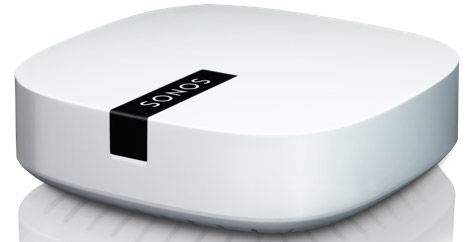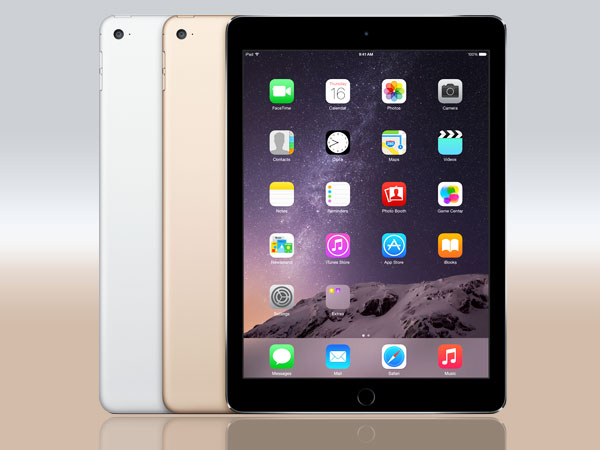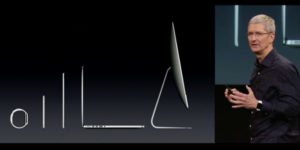There have been a lot of interesting tablets launched over the last month, but Apple — the primary driver in this market — didn’t launch one of them. Part of its problem was that it accidentally leaked the tablet specs before the announcement, removing much of a chance for excitement.
Leaks aside, many of the products from others seem far more exciting this quarter. I’ll explain, and then close with my product of the week: the new Sonos Boost.
New iPads… Yawn
Remember when the first and second iPads came out? They were magical, amazing devices. Fifty percent of the installed base is still generation 1 and 2 iPads, according to studies. This shows what a great job Steve Jobs did at exciting the market, but it reflects on the fact that Tim Cook can’t get people to give them up to buy new ones.
Tablet sales growth has dropped from a whopping 55 percent as late as last year to a projected 11 percent growth this year, and the market isn’t anywhere near saturated. Apple doesn’t dominate the market any more. Apple’s share this year is down too; it sold just 13 million units in 2014 against a total market of 48 million units.
The reason for this is that much of the volume is now in the 8-inch class of products, which average around US$200, and Apple sells its similar iPad mini for around twice that price, which likely is why it doesn’t sell well. These numbers were reported in The Wall Street Journal, a long-time Apple supporter, which got them from IDC.
The new products aren’t that exciting. They’re a little thinner and lighter; they have a fingerprint reader for security, like the iPhones, and a little bit more performance. They are better integrated with other Apple products, so Apple users should like them — others, not so much. The big problem is, I still don’t see any huge reason to get one if your existing iPad or other tablet is working just fine.
Apple did something rather strange as well. Its big iPad Air gets a burst camera, which is handy when filming fast-moving objects, but taking a picture with a big tablet makes you look like a dork. The iPad mini, which is a far better size to use as a camera, doesn’t get this feature, even though it is a whopping two times the price of most competitors.
What’s also weird is that even though the iPad mini is twice the price of competitors, it has a down-level processor — like Apple wanted to just make it cheaper. This whole line feels like Apple missed a meeting.
Following are some of the recently launched products the latest iPads are up against.
Asus PadFone X Mini
The PadFone X Mini, jointly launched last week by Intel and Asus, is far more interesting. In the iPad mini class this $200 product — yes, half the price folks pay for an iPad mini 3 — is both a tablet and a smartphone. Yes, for half the price of the iPad mini or a third of the price of most iPhones, you can have a contract-free device that will do both phone calls and tablet stuff.
You see, the phone nests in the back of the tablet, so the device is more like a 4.5-inch smartphone that can grow to 7 inches if you want more of a tablet experience. Let me remind you that the 4.5-inch form factor was what Steve Jobs himself said was ideal for phones, and with a quick snap of an accessory, you can transform the PadFone to a 7-inch tablet, which is bigger than the biggest iPhone. You can have all of this under one data plan and for a fraction of the price of an iPad or iPhone.
This builds on a concept created by IBM in the 1990s called a “modular computer” and places the smartphone as the core module. While it runs Android, it could be an ideal platform for the coming Windows 10 product set, given the core technology is from Intel. Low price, great value, and a relatively unique form factor.
Google Nexus 9
With performance scores in line with a Mac Pro — yes, not an iPad but the Mac Pro — the Nexus 9 is a showcase for what you should be able to get at the iPad mini price.
This performance is thanks to the new Nvidia Tegra K1 Processor, which has a 192-core Kepler GPU at its heart. In fact, the Nexus 9 is actually in the iPad Air’s size class, faster, with a price in line with the iPad mini, and with better speakers than either of them.
This is a lot of value if you want a more traditionally sized tablet. Well differentiated in price and performance — and actually slightly lighter than the iPad Air — this is a lot of value for the money. So, for about the same price as an iPad mini 3, you get a product that is arguably superior to an iPad Air 2.
Dell Venue 8 7000
The Dell Venue 8 7000 is an impressively thin product — and like the PadFone X Mini, it has an Intel processor. What makes it stand out is that not only is it just 6mm thick, it is the first device with an Intel RealSense Snapshot Depth Camera.
This camera is unique in that it allows you to edit the depth of field after the photograph is taken. For instance, if you want to focus on something close in or at a distance, you can change the focus to sharpen the item you want to see better, because the camera has captured all of the information needed to make that work.
But wait — there’s more! The camera is also a 3D-depth camera, so you actually can measure things accurately in pictures you have taken, or change the background dynamically during video calls. (If you are playing hooky in Hawaii, you can put a hospital room backdrop behind your image as you video-call in sick.) This is so much cooler than a fingerprint reader and unique to this tablet (for now).
In addition, the Venue gets an OLED display — the technology that is expected to replace the LCD in the iPads.
Try to find any other traditional camera that has this capability, and you’ll find it to be unique. Given this is an 8-inch product, you are more likely to use it as a camera than you might a full- sized tablet.
Compare this to the iPad mini 3, which didn’t even get the latest processor, didn’t get the burst camera, and is thicker (7.5mm vs. 6mm). While pricing has not been announced, I expect the Dell Venue 8 7000 to be less expensive too.
Wrapping Up: Wow, a Fingerprint Reader!?!
The only thing that really stands out on the iPad line — other than the Apple ecosystem, which does still lead the market — is the fingerprint reader. Taken against the utility of the PadFone X Mini, the Nexus 9, or the Dell Venue 8, the line seems impressively noncompetitive.
This is what Tim Cook thinks will drive people to trade in their perfectly good old iPads for a new one? Oh, and Apple still sells the old ones at a substantial discount. Gee, for the same price as a brand new well-differentiated product from Asus, Google or Dell, I can get an obsolete unused product from Apple?!? Wow — how far we have fallen.
Of course, hang on to your hats. Apple has a 12-inch class tablet coming that looks a lot like a Surface Pro tablet but won’t run all the business apps and won’t have a magnetically attached keyboard.
It was delayed because Apple is having manufacturing problems with the new iPhone, which makes a ton of sense because there is so much in common between a 5-inch phone and a 12-inch tablet. Really?!? Almost makes you forget that Tim Cook, Apple’s CEO, is considered one of the leading supply chain experts. Almost…
Product Of The Week: Sonos Boost

In the Internet of Things space for the home, there are two firms I think are substantially ahead of the rest: Insteon for home automation and Sonos for music distribution. No one else is close.
Like Insteon, Sonos also uses a combination of wired and wireless technologies, but while Insteon uses electrical wire line, Sonos uses Ethernet on top of a proprietary grid network. Grid networks use each device to expand the wireless coverage — but if you have too much space between the modules, you need some kind of a bridge.

Sonos Boost is such a bridge, and it allows you to put the components much farther away from each other without having to wire them into a physical network, which is kind of handy if, like me, you’ve installed a Sonos system by your pool or out in your yard.
With one component, you can upgrade your Sonos system to handle interference and range issues that often hamper the use of WiFi or grid products. Given, I’m pretty much wall-to-wall Sonos. Because this made my system — which actually worked pretty well — even better, the Sonos Boost is my product of the week. Now if I could just convince Sonos to bring out an outdoor module.
























































